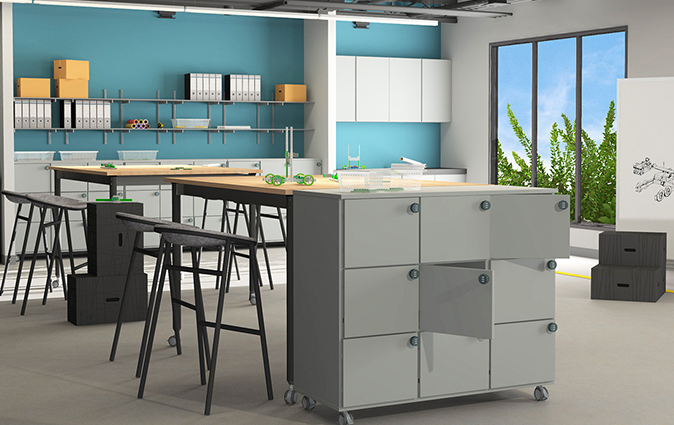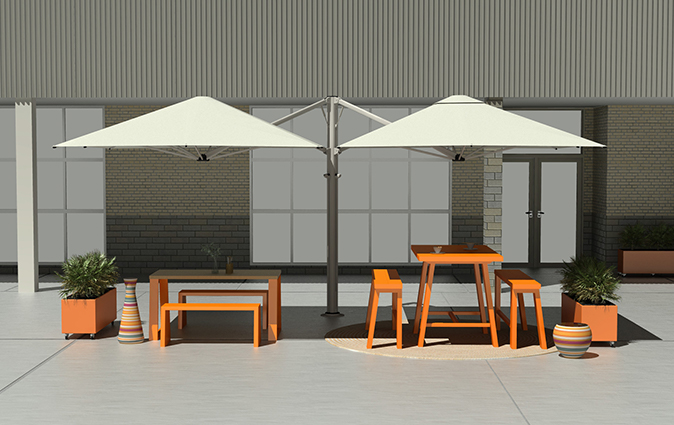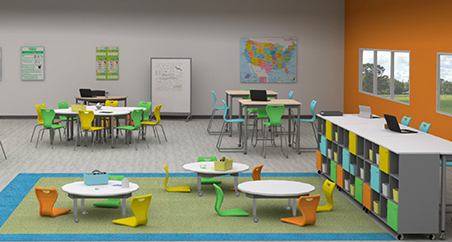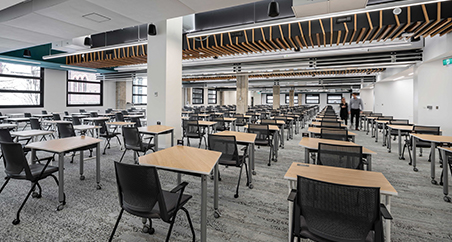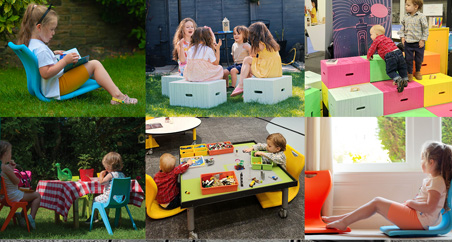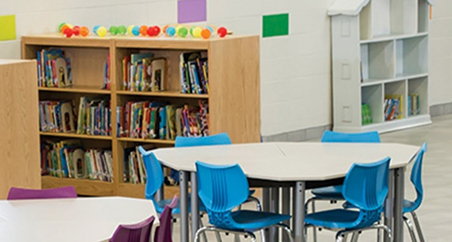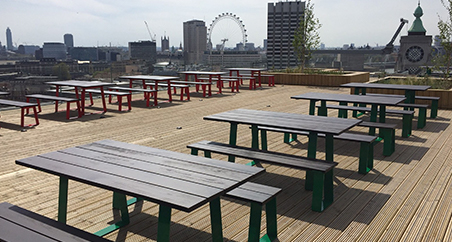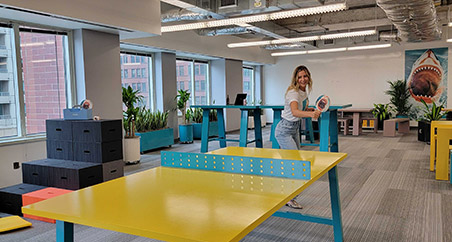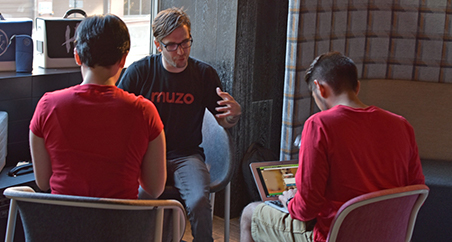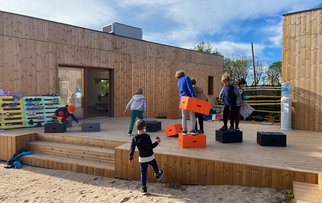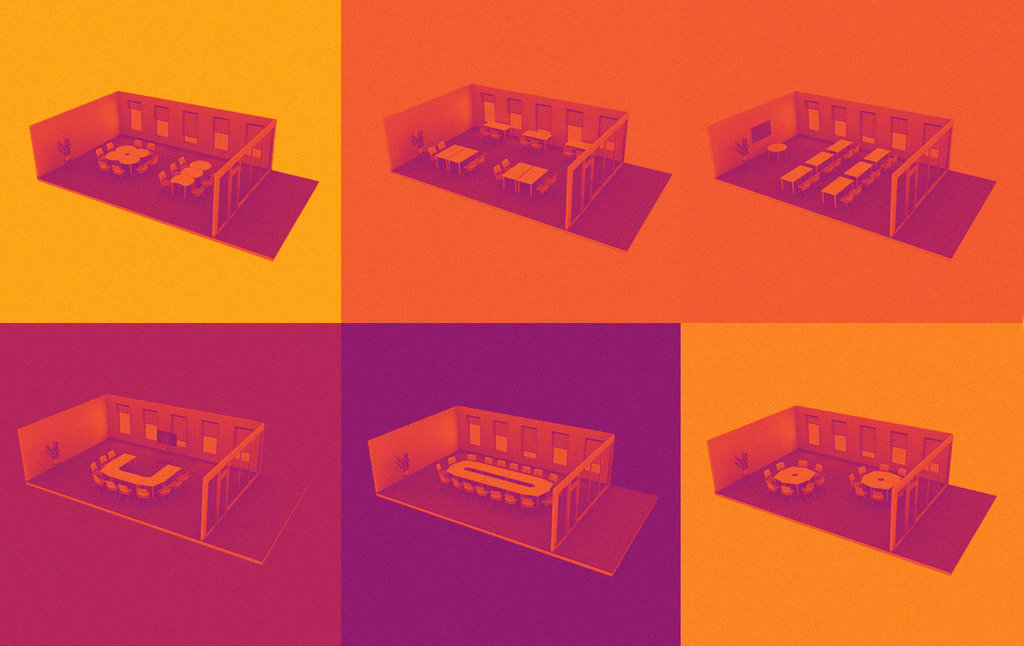
Social and environmental performance in business refers to the extent to which a business operates in a way that benefits society and the environment, in addition to generating financial profits. This includes factors such as reducing carbon emissions, using sustainable materials and energy sources, treating employees fairly, and contributing positively to the communities in which the business operates. Companies that prioritize social and environmental performance often have a broader purpose beyond just maximizing profits, and are increasingly seen as important leaders in creating a more sustainable and equitable world.
Implementing adaptable spaces and repurposing real estate can play a vital role to achieving high social and environmental performance in several ways:
● Reduced Environmental Footprint: Repurposing rooms and implementing flexible spaces can reduce the environmental footprint of a business by minimizing the need for new construction and reducing energy consumption. By repurposing existing spaces, businesses can avoid the environmental impact of constructing new buildings, while also reducing the energy and resource consumption associated with new construction.
● Increased Resource Efficiency: Repurposing rooms and implementing adaptable spaces can also increase resource efficiency by making better use of room occupancy, existing spaces and resources. This can include using natural light instead of artificial lighting, utilizing energy-efficient appliances, and reducing the amount of water and other resources used in the building.
● Improved Employee Experience: Implementing flexible spaces can improve the experience of employees, leading to increased job satisfaction and productivity. For example, providing employees with optional workspaces and breakout areas can foster collaboration and creativity, leading to better business outcomes.
● Enhanced Social Responsibility: Repurposing rooms can demonstrate a company’s commitment to social responsibility and sustainability. This can help to build trust with customers, employees, and other stakeholders, and can contribute to a positive brand image.
Overall, implementing these ideas can help businesses to achieve high social and environmental performance by reducing their environmental impact, increasing resource efficiency, improving the employee experience, and enhancing their social responsibility.
Where do we start?
Repurposing any space starts with Identifying underutilized areas. It may be an office with low occupancy, a wide corridor with slow traffic or even a storage cupboard. Then we can explore a new purpose or ideally multiple purposes. The more adaptable a space is, the higher your social and environmental performance will be. Furniture design will determine the success of a multi purpose space. So we just need mobile furniture that can be reconfigured right? Wrong! The misconception about mobile ‘flexible furniture’ is that it’s only role is to move around as and where needed. Let’s look at the most overlooked equally important necessities:
Durability and Longevity
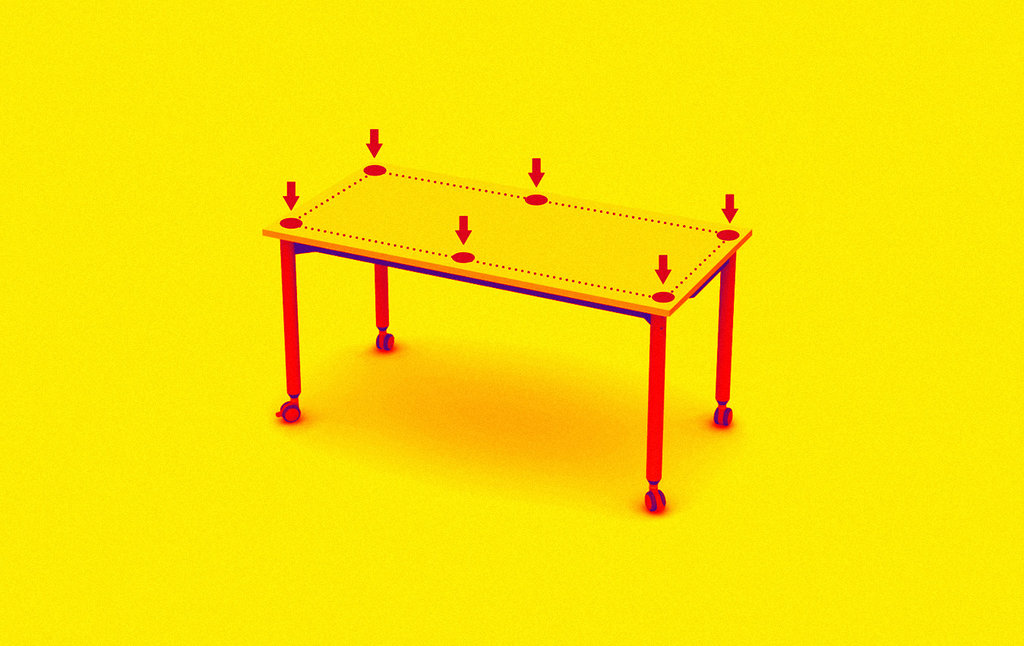
● People sit, lean and stand on tables. Does the under frame support all sides and all corners of the table top? With most flip top tables the answer is no, it’s only supported by one central beam that runs down the center. Frames bend and break and then need to be replaced. • Your table moves around on castors and you apply the break with your foot to keep it in place. It’s the most abused and important component of any piece of mobile furniture and yet it’s the most undervalued and remains an afterthought. In fact the castor should be the center of attention as its performance will dictate the success or failure of any portable furniture design. Most casters are made from cheap plastic and can’t handle the strain of daily use of different terrains required for a truly multifunctional space today. Castors break easily and require replacements time and time again which is counter productive to a higher environmental performance.
● How many people are required to safely operate the mechanics of a folding, mobile piece of furniture? Does it involve lifting a large amount of weight that risks injury to the user and damage to the furniture if dropped? Furniture that folds, moves and stacks often requires a procedure to follow in order to avoid damage and risk of injury. The better the design, the less we depend on human error.
Inclusivity and Psychology
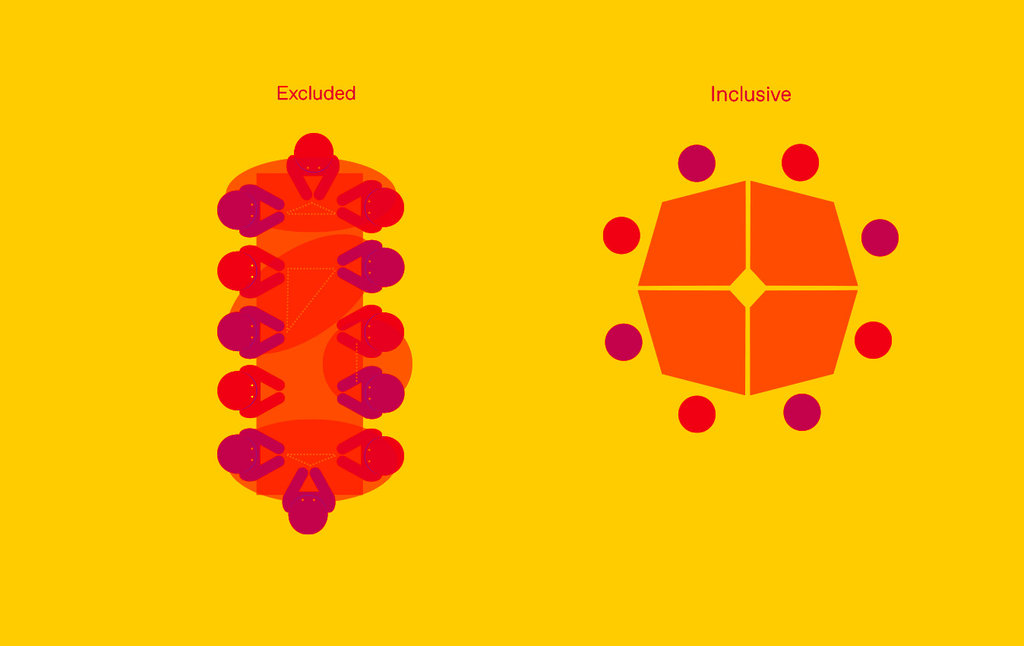
● Does your furniture provide a clear line of sight between group work participants and help eliminate barriers for those of us with disabilities such as hard of hearing, impaired vision, restricted mobility?
● Without a clear line of sight, people in certain positions during collaborative work can be made to feel inferior and often lack the confidence to contribute their full potential.
● In terms of seating or standing positions, does everyone have their own equal elbow space and room for their knees under the table? In most cases no, somebody has the discomfort of having their knees pressed against the table legs. This also restricts the accessibility for wheelchair users.
Power Accessibility
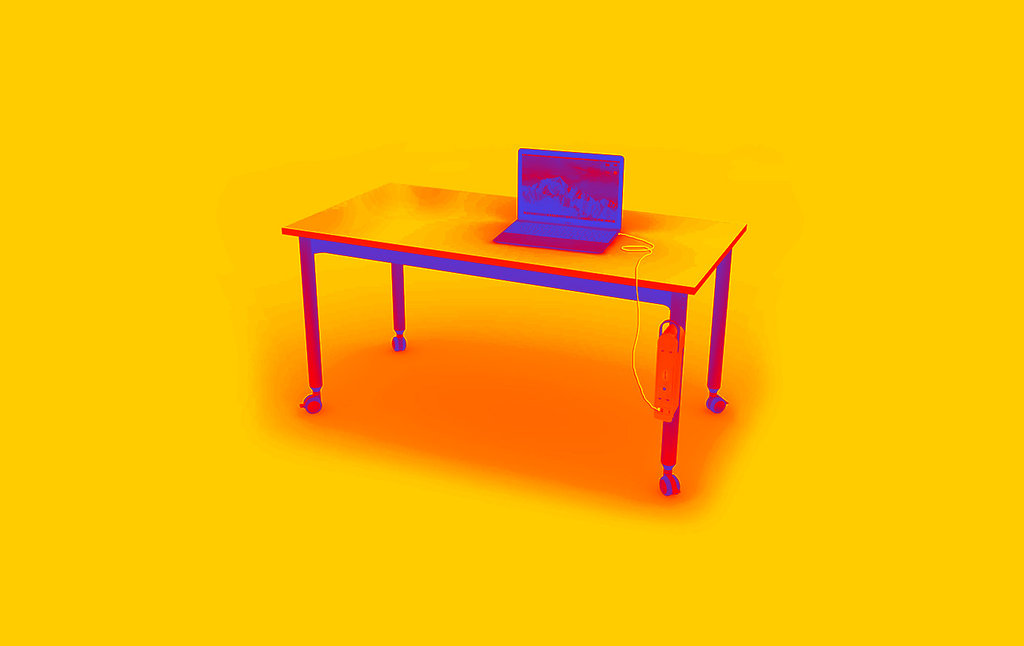
Almost every space requires the ability to power technology. For years and to this day we still depend on sockets on walls, floors and extension cables. Unsightly plastic ports and trunks are integrated into beautiful wooden tops only to house several cables often tangled up with one another. So how can a space be truly repurposed and reconfigured if the power source can’t move with the furniture? The answer is investing in wireless battery technology. Wireless power solutions can contribute to better environmental performance in the workplace in a number of ways:
● Wireless power solutions can eliminate the need for cords and cables, which often consume energy even when devices are not in use. By using rechargeable battery technology, for example, devices can be charged or powered only when needed, which can help reduce energy consumption and save money on electricity bills. Batteries can be charged overnight during less demanding consumption hours.
● When cords and cables become damaged or outdated, they often end up in landfills, contributing to e-waste. By using wireless power solutions, there are fewer cords and cables to dispose of, which can help reduce e-waste and its environmental impact.
● Reduced use of toxic materials: Some cords and cables contain toxic materials, such as PVC and lead, which can be harmful to the environment and human health. By using wireless power solutions, there are fewer cords and cables that contain these materials. Overall, wireless power can help create a more sustainable workplace by reducing energy consumption, e-waste, and the use of toxic materials. This can not only benefit the environment, but also lead to cost savings for the organization and promote a happy mobile workforce.
Here at Muzo our commitment to Sustainability and environmental responsibility is a significant part of the Muzo culture and our success. Environmental stewardship is integrated into all aspects of our business starting with the way we design our unique, robust multi-functional furniture products. We have a strict policy of only selecting sustainable materials and Fabrics. Via innovative design, Muzo provides products that stand the test of time.This product longevity keeps them out of landfill and means additional resources and processes are not used to produce replacements. At the end of their life, Muzo products can then be easily recycled.
Examples of our thinking include our globally successful Kite folding table system with wireless battery power capabilities and our unique dual locking castor which is so strong we offer a lifetime warranty!

